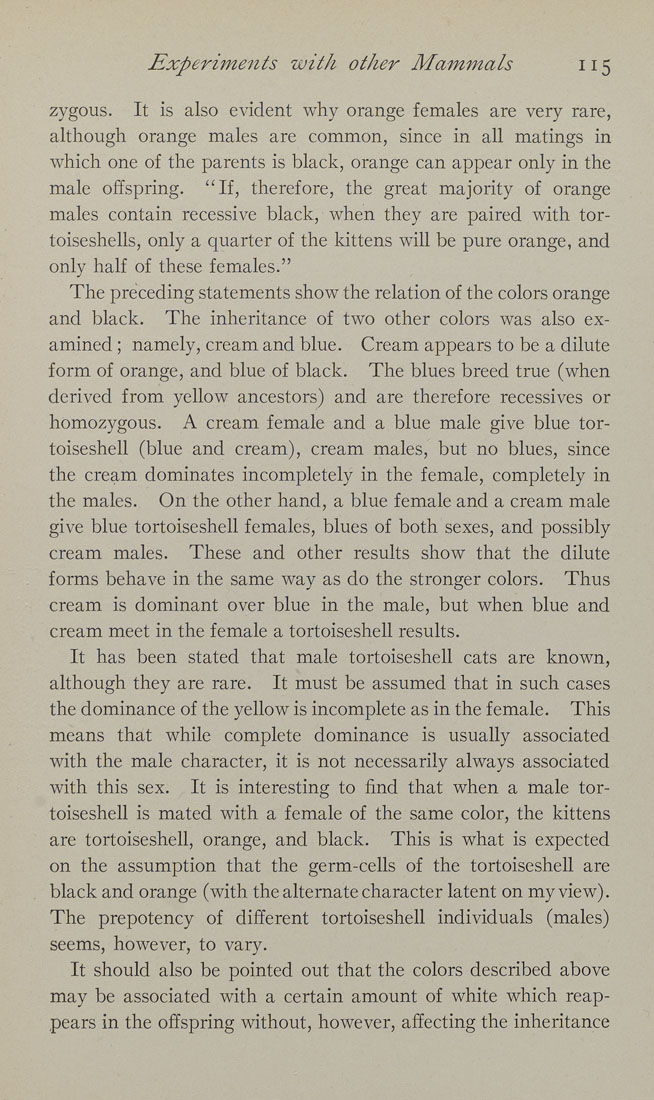Experiments with other Mammals 115
zygous. It is also evident why orange females are very rare,
although orange males are common, since in all matings in
which one of the parents is black, orange can appear only in the
male offspring. "If, therefore, the great majority of orange
males contain recessive black, when they are paired with tor-
toiseshells, only a quarter of the kittens will be pure orange, and
only half of these females."
The preceding statements show the relation of the colors orange
and black. The inheritance of two other colors was also ex¬
amined ; namely, cream and blue. Cream appears to be a dilute
form of orange, and blue of black. The blues breed true (when
derived from yellow ancestors) and are therefore recessives or
homozygous. A cream female and a blue male give blue tor¬
toiseshell (blue and cream), cream males, but no blues, since
the cream dominates incompletely in the female, completely in
the males. On the other hand, a blue female and a cream male
give blue tortoiseshell females, blues of both sexes, and possibly
cream males. These and other results show that the dilute
forms behave in the same way as do the stronger colors. Thus
cream is dominant over blue in the male, but when blue and
cream meet in the female a tortoiseshell results.
It has been stated that male tortoiseshell cats are known,
although they are rare. It must be assumed that in such cases
the dominance of the yellow is incomplete as in the female. This
means that while complete dominance is usually associated
with the male character, it is not necessarily always associated
with this sex. It is interesting to find that when a male tor¬
toiseshell is mated with a female of the same color, the kittens
are tortoiseshell, orange, and black. This is what is expected
on the assumption that the germ-cells of the tortoiseshell are
black and orange (with the alternate character latent on my view).
The prepotency of different tortoiseshell individuals (males)
seems, however, to vary.
It should also be pointed out that the colors described above
may be associated with a certain amount of white which reap¬
pears in the offspring without, however, affecting the inheritance
|








